NSPCC’s Full Stop campaign — a fundraising triumph. Part three: the appeal
Celebrating NSPCC Full Stop: how the biggest ever-public fundraising campaign from a British charity set out to transform child protection. In part three, Giles celebrates the appeal in all its innovative facets.
- Written by
- Giles Pegram CBE
- Added
- January 24, 2018
I will now explore the activities that happened during the appeal. I've had to leave a lot out, and I apologise to those who organised those events.They indicate the sheer scale of activity which all needed to be supported.
Since it was brought together in January 1999, the national appeal board and its many sub-committees arranged some truly unique events and fundraising initiatives.
And so, from the principles and planning, to the activities of the appeal itself.
Making a difference in local areas
When it launched, the NSPCC Full Stop strategy divided the regions of England, Wales, the Channel Islands and Northern Ireland into 10 regional committees of influential local individuals, each working towards regional targets. Our existing volunteer branches worked with local staff to recruit them. Therefore the branches were committed to them, and didn’t complain about stepping on each other’s toes. The branches continued with their activities, raising core funds. The regional committees organised higher level activities such as balls or corporate partnerships. The chairs of the regional committees came together as the regional fundraising board. It worked.
Lady Bamford OBE, was in charge. She pulled together the regional committees, and gave an impassioned speech to potential local volunteers at St James’s Palace.It is no co-incidence that the regional committees were the first to reach their target.
In 2002, Emma Harrison took over the leadership of the regional fundraising board from Lady Bamford, who remained a Vice Chairman of Full Stop and continued to raise funds through the family company JCB.
These included the “Spring Wakening Dinner” to celebrate Holi in 2000, where the national appeal board brought together leading figures from the Asian community.

The Safe Place appeal in Liverpool has been very successful, thanks largely to the generosity and support of John Hargreaves, chairman of Matalan, who has been the driving force behind it. The Amulet Ball in 2000 attracted high-profile guests such as President Bill Clinton, helping to raise more than £1,000,000 in the North West of England.
The biggest single event in regional fundraising was the “Dream Auction”, organised by an especially-convened group led by members of the London Committee.The range of auction lots, including a Bugatti Veryon 16.4 and a shopping spree with Elizabeth Hurley, made the Dream Auction Full Stop truly exceptional. It raised £3.1m on the night and even more subsequently, thanks to a collaboration with the on-line auction site – ebay.
Along with their construction company JCB, long-time supporters Sir Anthony and Lady Bamford raised £2m for the Full Stop Appeal, matching staff fundraising with their own very kind gift.
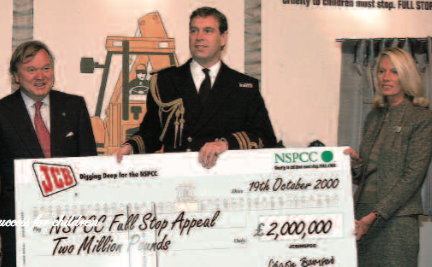
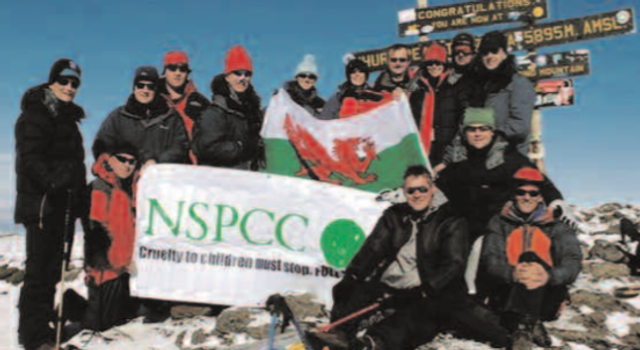
Many unique and unusual events also have taken place. David Pickering, chairman of the Welsh Rugby Union, lead a brave team of volunteers to the summit of Mount Kilimanjaro, whilst Gordon Wilson sets a land speed record for a solo blind motorcyclist.
In a first for a UK charity, the Trades Union Congress backed the appeal in 1999. This adoption reached out to more than 3.3m people in over 20 trade unions supporting our cause. Led by national appeal board member, and then general secretary of the TUC, John Monks, it was the first time the trade union movement had ever united behind a charitable cause
In the North-East, Emma Harrison and her company A4E have held a number of fundraising events, including the sponsored dance day at Thornbridge Hall, pictured here, and there have glamorous balls and events hosted by luminaries such as the Duke of Westminster, who of course had been chair of the NSPCC’s Centenary Appeal in 1984, and continued his support, 15 years on. That's good stewardship!
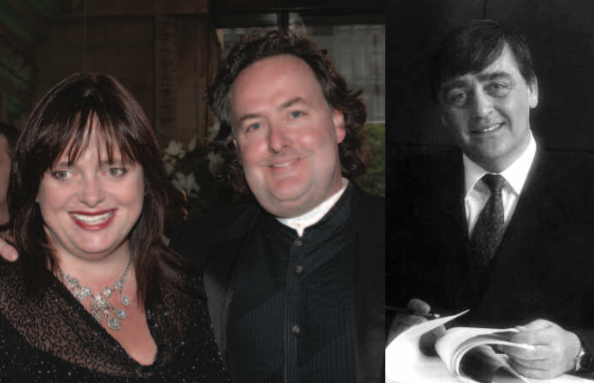
Fundraising from Sport and Entertainment

Sport
Sport has an extraordinary capacity to influence, protect children and raise money. In this sector, Sir Rodney Walker and Sir David Richards led an active group of volunteers (all of them senior figures in prominent sporting organisations, or celebrity sports stars)
One of the first initiatives to be organised by this group was Football Full Stop, which is supported by teams in the premiership down to teams playing in local parks, all raising money for the Full Stop appeal.
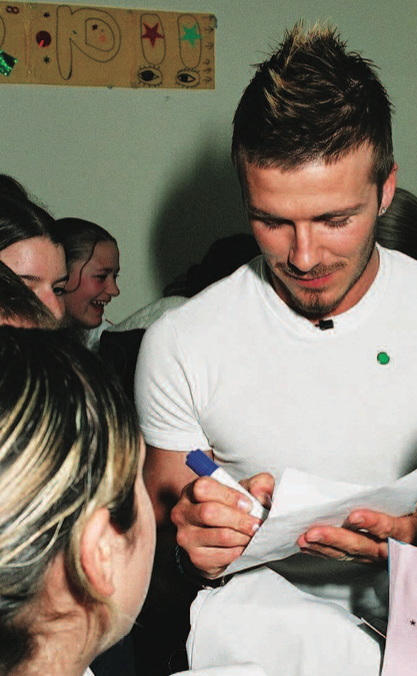
David and Victoria Beckham showed their support by hosting two high-profile parties ahead of the England team’s last two World Cup campaigns, each of which raised hundreds of thousands of pounds.
David also visited an NSPCC project to meet some of the children who had benefited from the event.
'Stay strong and things will get better' he told them.
The last event ever to be held in Wembley Stadium before its rebuilding included appearances from Sir Elton John and Pele, which made the headlines in many national newspapers.
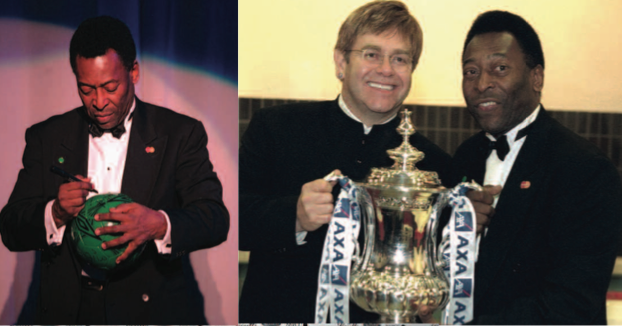

Meanwhile Formula One celebrated 50 years of the Drivers’ Championship with an event hosted by Bernie Ecclestone and all living former champions, raising more than £1.5m.
The worlds of rugby league and rugby union have also shown a great deal of support. In rugby union, the England team adopted the NSPCC as their official charity in 2001 and several of the brightest stars have continued to champion our cause, with the NSPCC receiving £50k from Matt Dawson’s benefit year.

One of the most extraordinary events of the year was held at Buckingham Palace, where there is a small, but adequate, tennis court in the grounds of the Palace. The Duke of York asked Her Majesty the Queen if we could use the court for an event and she graciously agreed.
I was a little disappointed by the court. It was, after all, an informal place where members of the Royal Family could have a game and didn’t feel like the setting for a really high profile event.
I was wrong.
Stands were erected, tiered seating provided, luxury wash-rooms installed and a reception tent was erected. TV cameras were installed at the Palace and a long range camera was installed at Hyde Park corner. The court was transformed from a garden court into something akin to Wimbledon.
I wish The Queen could have seen it. It was an extraordinary day, broadcast on the BBC and raised over £1m (net).

Entertainment
We were well networked, and used those networks. This is another sector that has generated great support for the Full Stop Appeal.
Michael Crawford OBE, made a personal £1.5m donation to the Nottingham Young People’s Centre.
In entertainment, the film industry has helped to raise hundreds of thousands of pounds for the Full Stop appeal with premieres for films like Johnny English and preview screenings for others such as Pride and Prejudice and Nanny McPhee.

Corporate support
Companies are made up of individuals who make decisions. They are not anonymous entities. We identified the decision makers, and cultivated them. Companies brought immense value and support to the Full Stop Appeal. Charity partnerships were not one-dimensional, but included a mix of promotions, staff fundraising, ‘charity of the year’ partnerships, sponsorship of events, donations from the company and donations from the most senior staff. These latter were common.
In one case, with a corporate partner, the Chairman, worldwide CEO, and the UK CEO, each made personal six figure gifts. Of course, this required a lot of engagement and was unusual. But it shows it can be done.
What was remarkable was the creativity displayed by the companies themselves. We didn’t approach a company with a set package, we discussed their support with them. Along with raising substantial amounts of money, they also contributed to the campaign by raising awareness, introducing family-friendly employment practices and, where appropriate, introducing child protection policies, thereby contributing not just to fundraising, but also to mission.
Several companies, notably Microsoft, BT and Hewlett Packar, provided the NSPCC not just with money raised during corporate charitable events or staff fundraisers, but also technological and digital support, with BT supporting the technology behind the organisation's innovative website for children and young people needing help and support.
The Royal Bank of Scotland showed its support through payroll giving, having raised £500k. Staff donated through their monthly salaries, which was double-matched by the RBS.
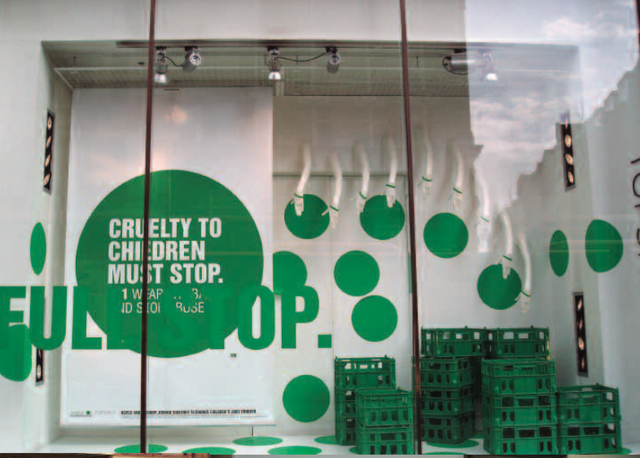
When the NSPCC’s green wristbands were launched, raising funds as well as awareness of our 24-hour Child Protection Helpline, the windows of Top Shop’s flagship store in Oxford Street were taken over by a stunning display of support.
Long-time supporters, including the Early Learning Centre and Hayes Specialist Recruitment backed the appeal with their own fundraising initiatives and numerous corporate supporters also lent their support, such as at the 118 118 event in the image below.
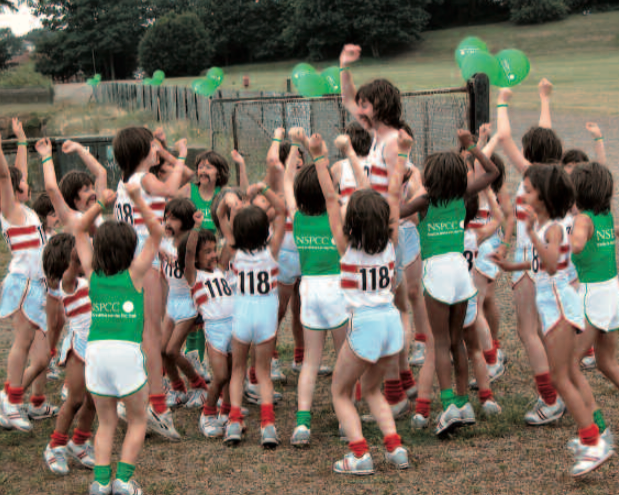
Private Institutional Philanthropy – support from the few for the many
The sheer scale and vision of the Full Stop Appeal inspired some who have already donated to the NSPCC to increase the amount they give. One donor, whose largest gift in the past had been £1,000, responded to the Full Stop Appeal by donating £100,000.
Other charitable organisations who have given significantly to the Full Stop appeal include the Big Lottery Fund, who supported a project with Asian children, giving them a safe new place to enjoy. Keith Vaz MP opened the project.
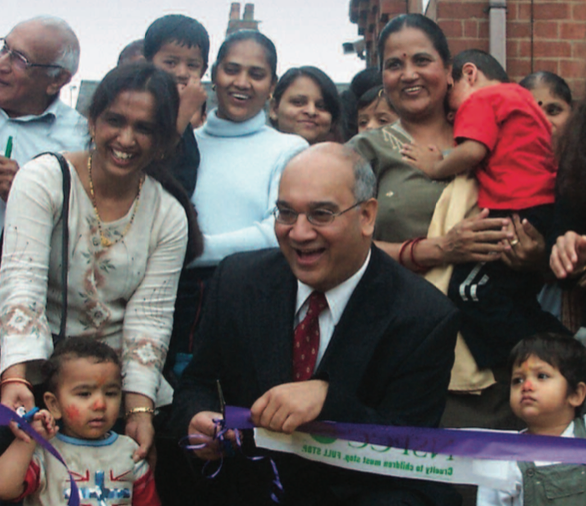

The stories in this exhibit have been the public-facing ones. However, there were many, many low profile gifts. Our existing donors gave, often at a level they had never given before. New supporters gave £10, £100, £1,000, £10,000, £100,000 or £1,000,000. They were each key to our success.
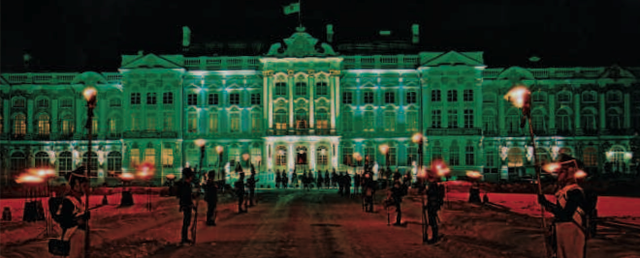
One of the largest gifts in the history of the NSPCC came through an adoption by the children’s charity 'For the Good of All Children' which staged a ball at the Great Winter Palace in St Petersburg. This single event drew in support from around the world, including President Bill Clinton, Tina Turner and Sir Bob Geldof. The event raised £10m to fund a national centre of excellence in Camden.
This deserves some detail. I'll call the volunteer David. We had heard David wanted to do something special, but hadn’t decided which charity to support. We knew David was a rugby fan, so we persuaded Jonny Wilkinson, a supporter, to speak a television piece, straight to camera. 'David, I want to ask you to do something extraordinary for children' he said. We played it to him and he was hooked.
We agreed a ball in St Petersburg and the museum would provide the costumes. The event raised £15m (net) to the NSPCC. It was used to build the centre of excellence in Camden to tackle the issue of child sexual abuse. The event was especially poignant as the original introduction came to a national appeal board member, Alexandra Ciardi, who was passionate and committed to the campaign’s success. Alexandra sadly died in 2005, but the event and the centre had been dedicated to her.
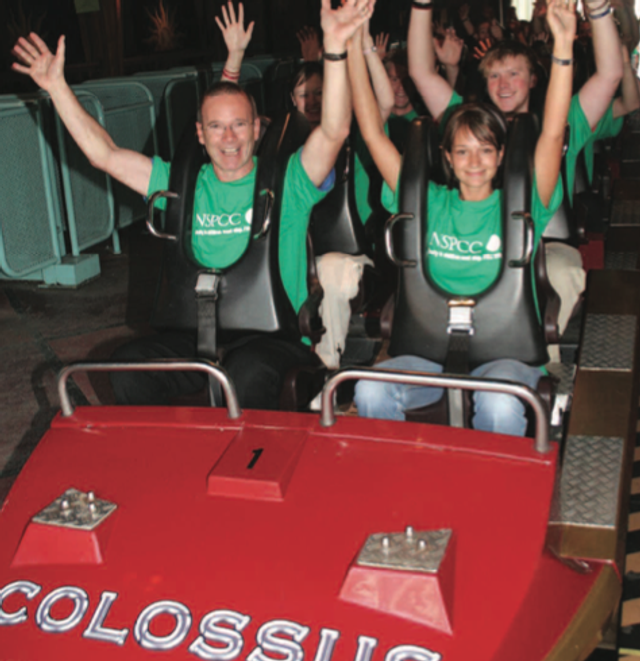
Focusing on individual projects – a new wave of support
After a review in 2002 of the greatly successful sector-based approach, the national appeal board took a fresh approach to fundraising. Some people felt that giving to a £250m target felt like a drop in the ocean, so we seized the opportunity to establish a new dimension whereby fundraising was built around our key services, enabling fundraisers and donors to focus on specific projects. Each had a target, but something more tangible to a £10,000 donor, for example. There were five project-specific fundraising boards, which secured high-level support for vital areas of our work.
The Caring for Children in Court Board was chaired by TV presenter Noel Edmonds, and supported by Cherie Blair. The staff of Madame Tussaud’s, having raised £100,000, celebrated by a thrilling ride on Thorpe Park’s Colossus rollercoaster.
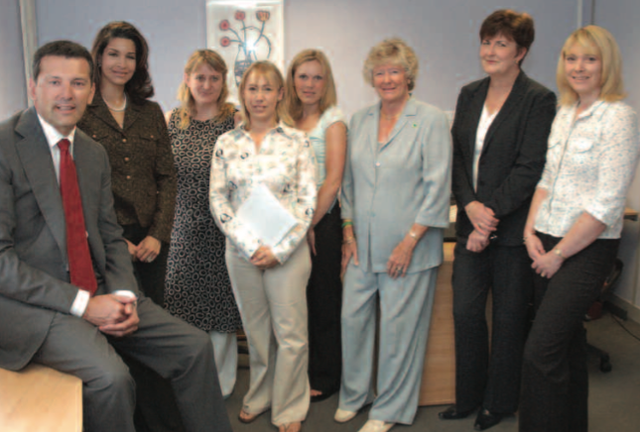
The Helpline Fundraising Board was chaired by Mark Wood. This board was responsible for some of the most innovative marketing successes to date, including providing the inspiration for the NSPCC’s green wristbands, at least 800,000 of which were sold. Its members, some of whom had big call-centre operations, also helped us with the development of our Helpline.
The Stop Organised Abuse Board’s aim was to raise the funds necessary to pay for the NSPCC’s ten specialist investigation services. Under the leadership of Vanni Treves, it attracted support from board members including Baroness Elizabeth Butler-Sloss and Frederick Forsyth.
Frederick Forsyth, a very significant donor, gave a talk to strong NSPCC supporters. He said child abusers should be sent to a desert island, which was not NSPCC policy. The audience knew it was not NSPCC policy. Frederick Forsyth knew it was not NSPCC policy, but we had the self-confidence to allow him to express his controversial views at an event the NSPCC had organised.
The “there4me.com” group was led by project envoy David Svendsen, raising money for the NSPCC’s confidential on-line advice service for young people. Similarly, The Rebuilding Childhood Board, under the leadership of Ramez Sousou, aimed to raise £60m. These five innovative groups added a new energy to the appeal.

Mobilising the public – changing society for ever
One of the true successes of this appeal has been the way in which it has captured the hearts and minds of the public. The tremendous level of popular support has meant that we have been able to generate large sums of money to start ending cruelty to children, and put pressure on government and change people’s perceptions of acceptable behaviour towards children.
At the end of the appeal, half of all adults cited protecting children from cruelty as the most important cause in society.
The PR and Publicity Committee, led by Peter Mead, had been crucial in co-ordinating and driving publicity as well as taking responsibility for raising funds from the media. I believe this is unusual.These weren’t in conflict; they were mutually reinforcing. As we will see later, it was their activity that took us to £250,000,000 and beyond.
But all of this wasn’t enough. Did we call it a day, as an unqualified success in real terms? Not on your life. How did we consolidate, let people retire with dignity, and re-group around old and new volunteers?
With so many exceptional events and innovative fundraising strategies, the Full Stop appeal was a triumph on every level. Which is a testament to the fundraising team, its volunteers and all its supporters. The next question was how to capitalise on this momentum and make the most of the exceptional support the NSPCC received and turn it into a lasting project. Something we will learn all about in the next part of this remarkable series.

















